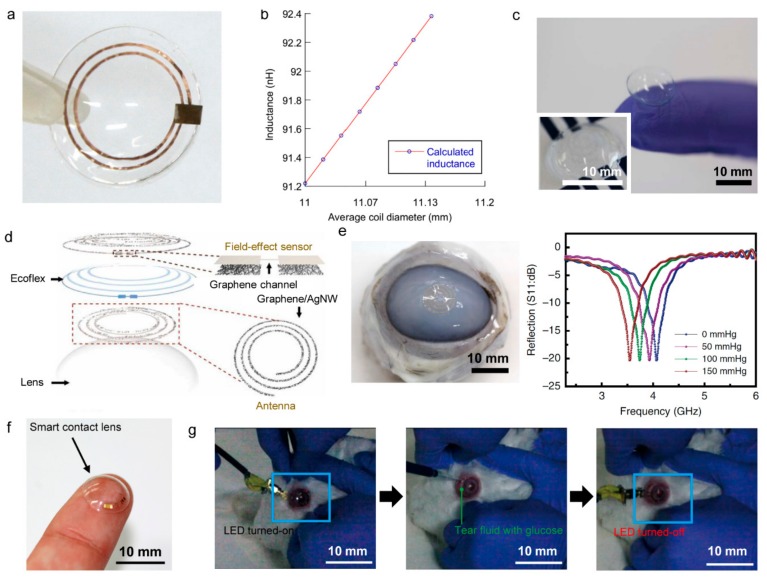Figure 7.
Smart contact lenses. (a) The contact lens sensor with sensing elements embedded in a silicone rubber contact lens (Reproduced with permission [140]. Copyright 2014, Elsevier). (b) The inductance of the coil as a linear function of the average coil diameter (Reproduced with permission [140]. Copyright 2014, Elsevier). (c) A photograph of the contact lens sensor. Scale bar, 1 cm. (Inset: a close-up image of the antenna on the contact lens (Reproduced under the terms of the CC BY license [45]. Copyright 2017, Springer Nature). (d) Schematic of the wearable contact lens sensor, integrating the glucose sensor and intraocular pressure sensor (Reproduced under the terms of the CC BY license [45]. Copyright 2017, Springer Nature). (e) Photographs of the sensor transferred onto the contact lens worn by a bovine eyeball (Left). Wireless recording of the reflection coefficients at different pressures (Right) (Reproduced under the terms of the CC BY license [45]. Copyright 2017, Springer Nature). (f) Photograph of the fabricated soft, smart contact lens (Reproduced under the terms of the CC BY-NC license [3]. Copyright 2018, the authors, American Association for the Advancement of Science). (g) Photographs of the in vivo test on a live rabbit using the soft, smart contact lens. Left: Turn-on state of the LED in the soft, smart contact lens mounted on the rabbit’s eye. Middle: Injection of tear fluids with a glucose concentration of 0.9 mM. Right: Turn-off state of the LED after detecting the increased glucose concentration (Reproduced under the terms of the CC BY-NC license [3]. Copyright 2018, the authors, American Association for the Advancement of Science).

